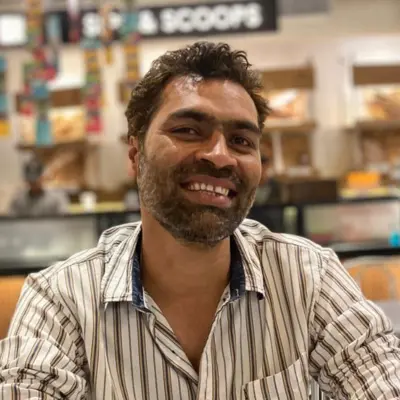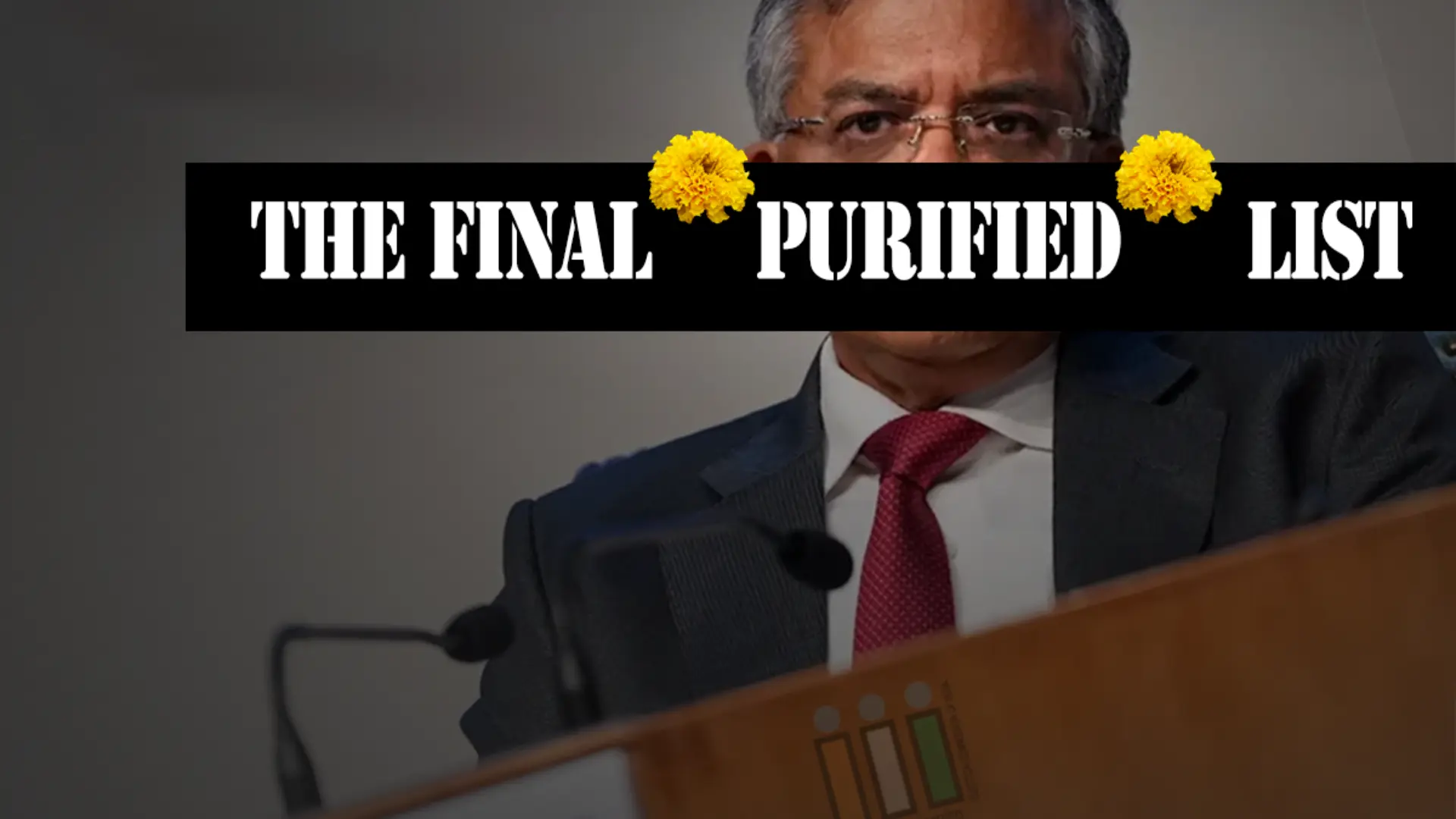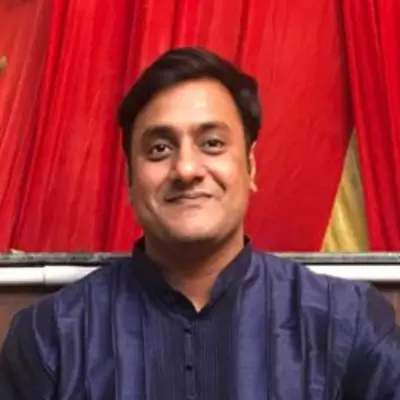
New Delhi & Bihar: The Reporters’ Collective’s analysis of the finalised voter roll of Bihar has found widespread errors of duplication and dubious addresses despite India’s Chief Election Commissioner Gyanesh Kumar claiming that the list is now “purified” after completion of the unprecedented Special Intensive Revision (SIR).
In Bihar’s finalised voter database of 243 assembly constituencies, we found more than 14.35 lakh suspect duplicate voters. These are voters with two different voter IDs but the same names, the same name of a relative, and an age difference of 0-5 years. Of these 14.35 lakh, about 3.42 lakh duplicates were the most alarming, where the ages on both voter IDs matched perfectly as well. Additionally, there were tens of thousands of cases where people across Bihar hold at least three EPIC IDs.
Our analysis also reveals that around 1.32 crore voters have also been registered in the final voter list of the 243 constituencies on dubious and non-existent addresses. These are not the notional addresses that the ECI is required to provide to families of voters who are either homeless or living in homes without a registered address. In these cases, random voters from different families, castes, and communities have been wrongfully clubbed together under fictional addresses.
In one of the most egregious of such cases, we found that 505 people from different families, castes and communities continue to be registered on a fake address in Pipra constituency’s final voter list.
This could not have happened if the ECI and its army of ground staff had actually carried out the door-to-door verification of voters and their records, as it claims to have done.
The investigation rebuts Chief Election Commissioner Gyanesh Kumar’s puffery after releasing the final voter list. On October 5, he said, “With the successful completion of SIR, the voters' list in Bihar has been purified. It is after a gap of 22 years that such a cleansing has taken place. The exercise will now be conducted across the country.”
The Reporters’ Collective conducted this analysis in collaboration with a group of data analysts for all 243 assembly constituencies, followed by reporting in select constituencies to verify the data analysis.
The large-scale errors we detected in the draft voter lists – including duplicate voters and those registered at fictitious addresses – have been incorporated into the voter database with finality, which will now be used by the ECI to conduct elections in the state in November.
On Monday, the ECI announced that elections for the Bihar legislative assembly will take place in two phases on November 6 and 11. A total of 7.43 crore people are listed as voters.
How It Went Down
On June 24, the ECI announced the SIR of the voter rolls in Bihar.
From June 25 to July 25, the first leg of this SIR was carried out, in which all voters were asked to register afresh. In this month-long phase, booth-level officers (BLO) fanned out across the state to distribute and collect enumeration forms from all voters in Bihar. While initially claiming strict document requirements, amid ensuing chaos, ECI changed the rules midway, asking voters to submit enumeration forms without documents, if they wished.
On August 1, the draft voter list was published. We began our investigation at this point.
We found a litany of errors and malfeasance. In our first report, we found 5,000 dubious voters in the Valmikinagar assembly constituency, who were also registered to vote in the adjacent assembly constituencies of Uttar Pradesh.
We then found over 80,000 voters in three Bihar assembly constituencies of Pipra, Bagaha, and Motihari, who were registered to vote under fake or dubious addresses.
Through our third investigation, we unearthed 5.56 lakh suspect cases of duplication in the draft voter list across 142 assembly constituencies. Of these, the 1.29 lakh cases were most alarming, where all parameters, including age, matched perfectly. We verified several of these voters as duplicates through photo verification or on-ground verification.
ECI tried to counter these findings by claiming that if errors had crept in, they would be cleansed in the second leg of the SIR exercise.
The Bihar Chief Electoral Officer responded to our investigations on X, and tried to play down the findings by claiming, “The current draft rolls published under the SIR are not final. They are explicitly intended for public scrutiny, inviting claims and objections…”
“Any alleged duplication at the draft stage cannot be construed as a ‘final error’ or ‘illegal inclusion’...” he said.
In short, he implied all the problems found in the draft voter list would be sorted by the time the final list was published after the second leg of SIR.
The second leg, lasting two months, began. In this period, local election authorities and their vast army of booth-level officials and volunteers were to verify documents submitted by voters. Political party volunteers or other electors were told to file claims recommending deletions from and additions to the draft list. These claims were to be approved or rejected after a purportedly detailed exercise by the ECI officials, including ground checks and document verification.
It is while reporting on this leg of SIR, in our last investigation, we reached the Dhaka assembly constituency in East Champaran. We discovered that under the cover of the chaos, the BJP had repeatedly attempted to delete around 80,000 Muslim voters from the constituency's rolls.
On September 30, the final list was put out. ECI patted itself on the back, calling the completed exercise a success. CEC claimed that purification of the Bihar voter rolls had taken place for the first time after 22 years. SIR is soon going to be conducted countrywide, he noted.
Fake Addresses
With the help of our collaborating data analysts, we decided to analyse the finalised voter list of all 243 Bihar assembly constituencies. We followed the same methodology we had while analysing the draft list. The methodology mimics the computer-based checks that the ECI is supposed to carry out internally on voter lists to identify potential duplicates and narrow down on other errors.
Here is what we have found.
1.32 crore voters continue to have dubious or fake addresses in these finalised voter rolls. We classify dubious and fake addresses as those where the ECI has registered more than 20 voters under the same address.
In the Barachatti assembly constituency, the ECI has registered 877 voters at house number 6. In Matihani constituency, 855 voters are registered at one fictitious address, and in Parsa assembly constituency, 853 voters are now registered to live at fictitious house number 23.
We ranked and compiled such examples of voters registered at dubious addresses across 243 constituencies. The worst twenty examples all had more than 650 voters registered at a single house address in the final voter list.
We decided to go back to the ground, to the crime scene of our very first report. In the draft list, we had found 80,000 voters registered at fake and dubious addresses in just three assembly constituencies of Pipra, Bagaha, and Motihari.
At the time, we had found the most mind-boggling cases in Galimpur Village of Pipra. We had unearthed 509 voters from different families, castes, and communities bundled and registered on one fictitious address. On another fictitious address, 459 voters had been similarly wrongfully registered as one unit.
When voters do not have house numbers, the ECI is required to give each household a unique notional address. In this case, hundreds from different houses had been bundled together, even though many had separate addresses recorded earlier on ECI records.
We went back to Galimpur to check if the Bihar CEO had been right. Had the ‘errors’ of the draft list been corrected in the final list?
In the finalised voter lists for Pipra, we have found that nothing has changed. In the final voter list, 505 voters continue to be bundled under one fictitious address, and 442 voters at another.
We revisited the voters we had interviewed for the earlier report. Shivnath Das was one of the 509 voters bundled under one fictitious address. He said ECI’s booth-level officials had not visited to verify their records and actual place of stay during the second leg of the SIR.
"No one asked us anything during this time. We ourselves questioned the BLOs and offered every possible cooperation, but nothing happened. No one came forward from anywhere. Now, we can't do anything. The Election Commission should be doing its job. What can we say?" he said.
His neighbour, Dashrath Das, had also been wrongly registered at the same fictitious address. He added, “This is sheer negligence on the part of the Election Commission and BLOs. Many people will be affected. The opposition is raising the issue for good. Even after the uproar, nothing was fixed.”
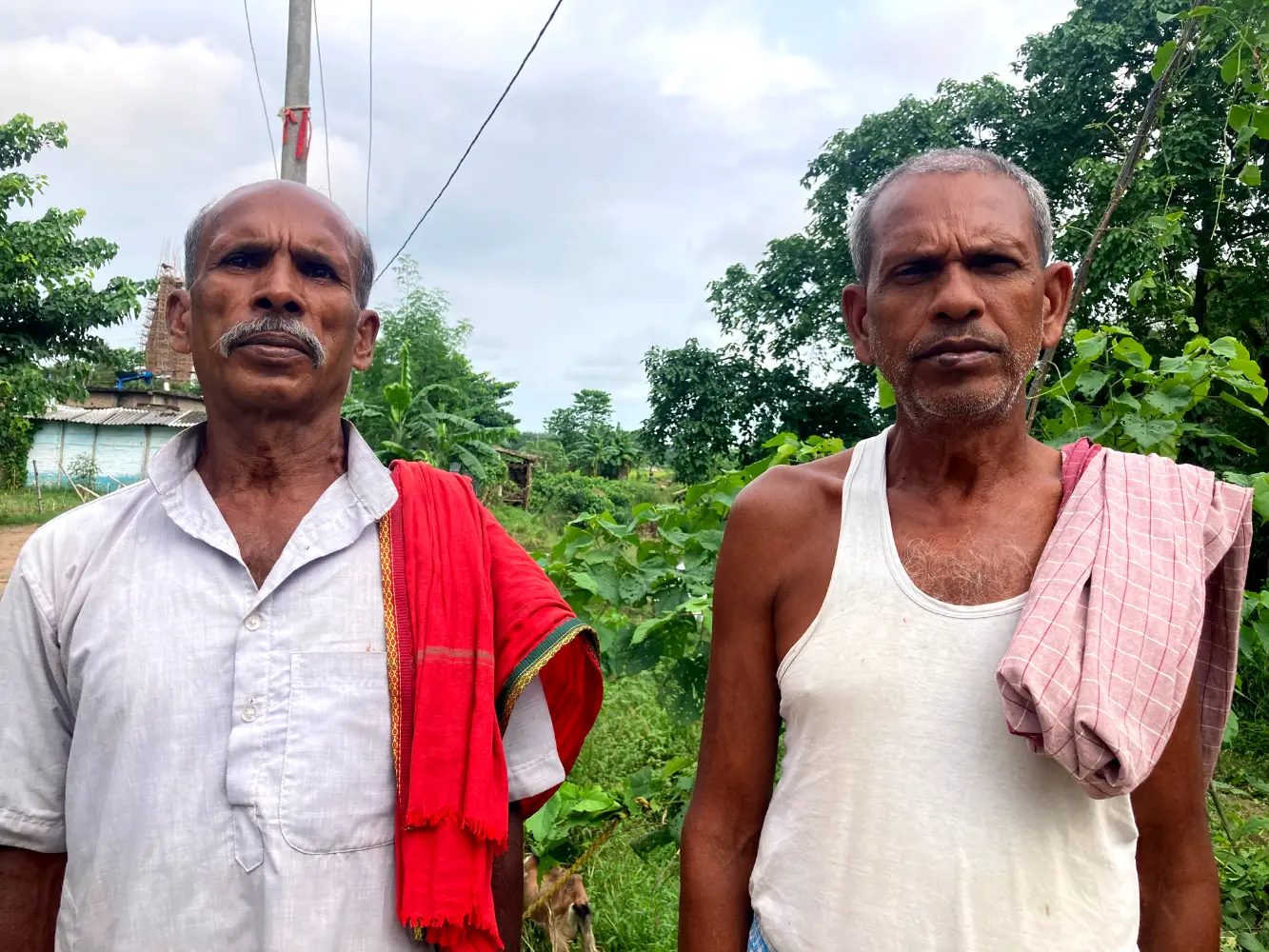
We then spoke to Vijay Kumar Chaudhury, the BLO for Galimpur village. We wanted to understand if he had carried out any further verification during the second leg of the SIR. He said that he could not comment on the matter. He said there was no forgery at his booth.
We made further inquiries with election officials at the constituency level. We later spoke with the Electoral Officer at the district offices, who informed us that Pipra election officials were aware of our report and had read and carefully considered it.
“When we checked the two dubious addresses cited in your report, we did not find any bogus voters. You also said in your report that these were not bogus voters,” he said.
When we followed up by asking why hundreds of voters were assigned the same house address even after verification, he said, “This is the notional numbering system for giving addresses which we have followed for years.”
This is not true. In the absence of a registered address, ECI assigns a notional number as an address to each family at one dwelling. CEC Gyanesh Kumar had, in fact, clarified this to the press when the controversy around fake addresses first erupted in August. He had claimed that election officials had been duly briefed on this method, after which the voters would appear on the new voter list in a “completely new way”.
We investigated the Pipra Electoral Officer’s claim that bogus voters had been purged. We found 1,512 voters in Pipra who hold duplicate voter IDs with identical demographic details and ages.
For example, 21-year-old Ankit Kumar has two voter IDs on Pipra’s final voter list. Against both his IDs, his house number is 111, and his father’s name is Vinod Ram. One of his voter IDs is registered at booth 338 and another at adjoining booth 339.
Dubious Duplicates
Across 243 assembly constituencies, we found 14.35 lakh voters holding two or more voter IDs with perfect matches for all demographics, and the age difference on their duplicate IDs being between 0-5 years. Of these, 3.4 lakh cases in the final list are the most alarming, where all details, including ages, are an exact match.
In our earlier investigation into the draft list, through data analysis and ground check, we had found thousands of duplicate Voter IDs, where even their photos were the same.
We revisited one such case in the Jale assembly constituency. Thirty-two-year-old Mithilesh Kumar had found himself registered at two addresses on the draft list. He continues to be on both in the final as well. This, even after the booth-level officers had become aware of the error.
In Gopalpur assembly constituency in Bhagalpur district, at booth 65, there lives 33-year-old Gulshan Kumar. With all the same details, he, like three other people, continues to hold duplicate voter IDs in the final list. Check the image below.
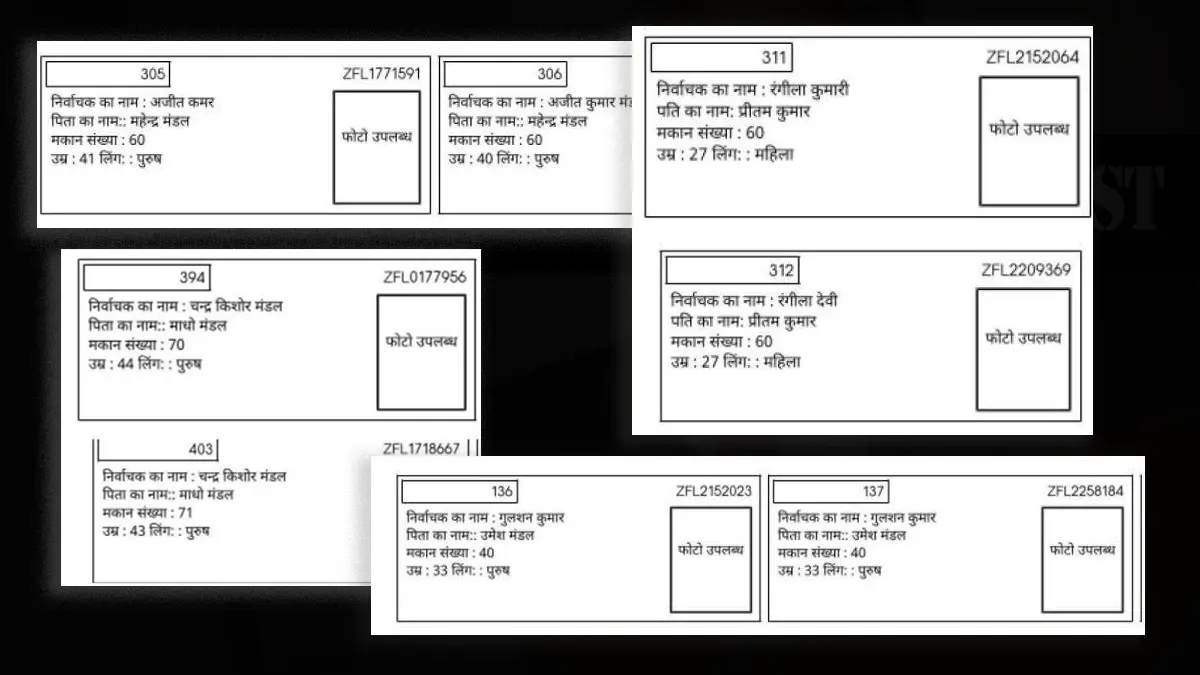
Dead Voters Still on the Voter List
In Muzaffarpur city, Ward Councilor Shanat Kumar made repeated attempts to remove his deceased parents, Uma Devi and Chandramani Shahi, from the voter list. His parents had passed away several years ago, but he had found their names listed on the draft list. Shanat tried repeatedly to get their names deleted during the second leg of the SIR. He failed. His dead parents are now voters on the final list as well.
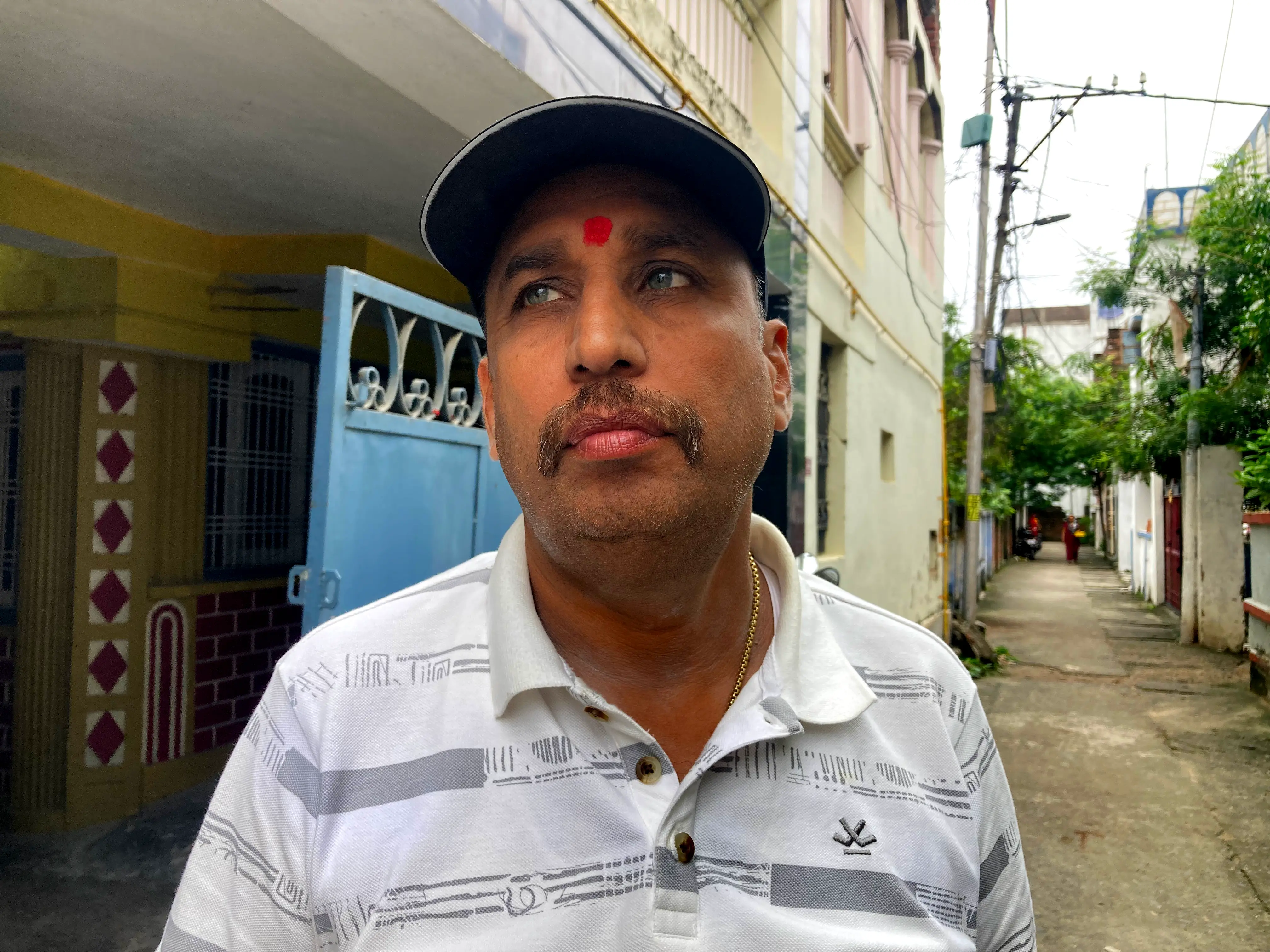
“I am a ward councillor and have repeatedly requested the deletion of more than ten names from my booth, along with my parents. We even took the BLO along and went around to verify, but all the names in the final list remain the same. After the first draft list, there was hope that improvements would be made, but what can be done now? The entire work was done in a hurry, and as a result, this has happened,” he told us. He said he was aware of such dead voters remaining on the final list at several booths.
This is the state of ECI’s ‘purified’ final voter list of Bihar.
ECI has announced the dates for elections in Bihar based on this list and is now preparing to unleash the SIR across the country.


.avif)
